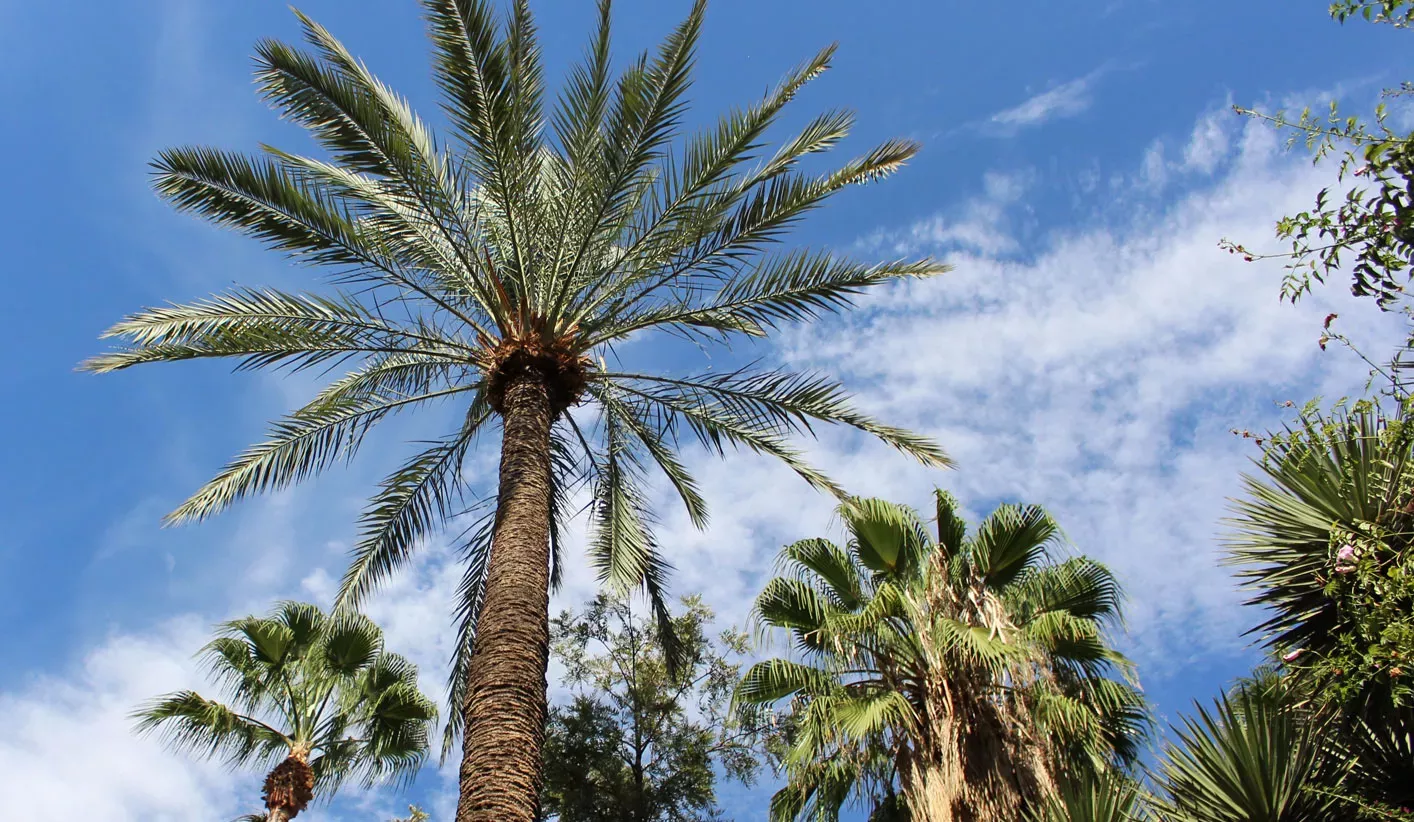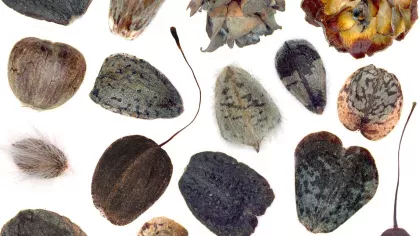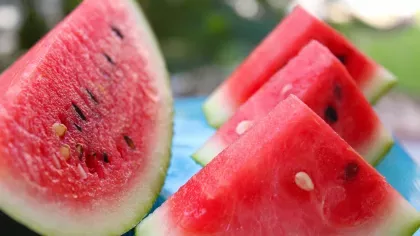5 July 2021
Archaeology meets DNA: peering into the past of the date palm
Scientists have decoded the genetic history of the date palm using a mysterious 2,000-year-old Egyptian artefact.

The date palm (Phoenix dactylifera) has been a foundation of Middle Eastern and North African agriculture for thousands of years.
In fact, it’s one of the earliest domesticated fruit tree crops.
Date palms can grow up to 23m high and are cultivated mostly to produce sweet fruits that can be eaten raw or used to produce syrups, oils and vinegars.
Today, it remains a crop of major importance and 9 million tonnes of date fruit were produced in 2019.
There are dozens of different date palm cultivars grown worldwide, including Medjool, which produces large, caramel tasting fruits and Deglet Noor which produces fruits with a firmer texture and more delicate flavour.

A tree with a long history
Historical records of the date palm are abundant, encompassing items ranging from coin engravings to stone panels produced by ancient civilizations.
While this gives us a useful historical insight, what has been less clear is how the date palm has evolved over time.
Evidence so far indicates that date palm was first domesticated in the Persian Gulf over 6,000 years ago and later introduced into North Africa, but the nature of its ancestry, and which ancestors have genetically contributed to our modern-day date palm have not really been revealed.
Understanding the timeline of crop domestication is extremely important for finding wild crop relatives that contain useful traits for improving resilience of the crops of today.
It’s a challenging task, but DNA sequencing has revolutionized research in this area and now offers insights of unprecedented depth.
To unravel the domestication history of date palm, we needed to compare the genomes of modern and ancient date palm material.
Which presents the challenge: how do we find an ancient date palm?

Ancient finds
That’s where Kew’s Economic Botany Collection comes in.
The collection holds over 100,000 extraordinary objects all made from plants or fungi, each with their own story and harbouring plenty of data yet to be uncovered.
And for plant biologists interested in evolution, the collection is an incredibly useful resource.
Within the collection we found an ancient Egyptian artefact made of plaited date palm leaves.
The unusual archaeological object was found 50 years ago at the ‘west dump’ in the temple complex of the animal necropolis of Saqqara, 20km south of Cairo and adjacent to the Nile Valley.
Today the area is a UNESCO World Heritage site.
The object was recovered during the 1971-2 EES (Egyptian Exploration Society) excavations which were directed by G.T. Martin (University College London) under the guidance of the Ministry of Antiquities (then, the Egyptian Antiquities Organization), and was first studied and published by Kew botanist Nigel Hepper.
When it was first excavated, the object was thought to be a ‘head-pad’, but there were no other finds from the region that supported this sort of interpretation.
Instead, based on similar looking finds from earlier time periods, we think the most likely idea is that it is part of a layering used to seal a vessel.
Radiocarbon-dating has confirmed the object is approximately 2,100 years old, dating to around 357-118 cal B.C.E, which means it was made and used at some point during the Late Period or the Ptolemaic Kingdom of ancient Egypt.


Wild ancestors
Although it was a challenge to extract, we succeeded in sequencing the DNA of the ancient Saqqara leaf object.
We also analysed the DNA of modern Asian and African date palm plants, and of closely related species of the date palm.
On a project led by Kew and involving 15 institutions from four continents, we found that ancient Saqqara date palm has a very similar genetic code to that of the modern North African date palm.
What was interesting is the fact that we also identified genetic information from two wild relatives, the Cretan date palm (P. theophrasti) and the sugar date palm (P. sylvestris), in our ancient Saqqara leaf.
This most likely indicates ancient events of hybridisation between ancient date palms and these species.
P. theophrasti is a wild date palm found in Crete and Turkey, while P. sylvestris is an Asian species that occurs in Bangladesh, Southeast India to Nepal, Pakistan, and the West Himalayas.
Considering the age of the Saqqara leaf, we can conclude that the sharing of genetic information between the Cretan date palm, the sugar date palm, and North African dates might have occurred already 2,100 yrs ago.


A piece of the puzzle solved
Sequencing ancient plant material of known origin and age has opened a unique window into the past of the date palm.
Further research should help us understand if the genetic information that the date palm obtained from its wild relatives included genes that increased its agronomic value, or that helped it to adapt to new environments when it started to be cultivated in Africa.
This information can/will be useful to adapt current date palm cultivars to climate change.
Read the paper
Escobar, O.A., Bellot, S., Przelomska, N. et al. (2021). Molecular clocks and archaeogenomics of a Late Period Egyptian date palm leaf reveal introgression from wild relatives and add timestamps on the domestication. Molecular Biology and Evolution






